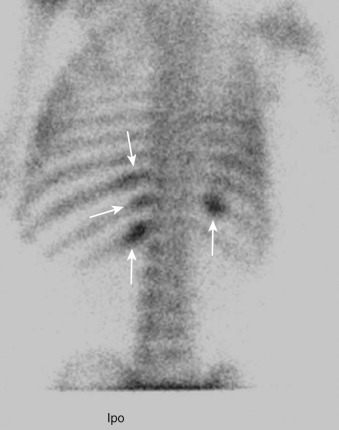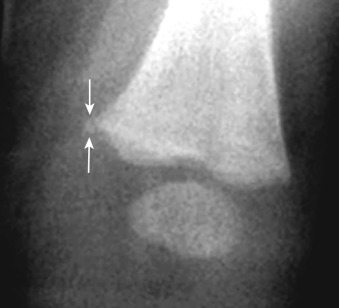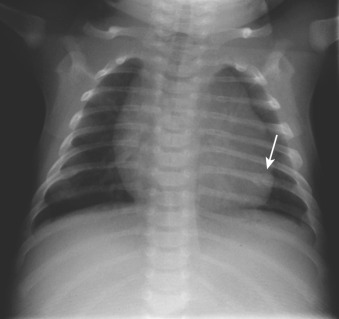Physical Address
304 North Cardinal St.
Dorchester Center, MA 02124
Red flags from the history that should lead the clinician and radiologist to consider child abuse include injuries that are not commensurate with the development of the child, a delay in seeking care, or vague or changing stories given by caretakers. Physical examination findings that the clinician may convey to the radiologist include bruises in various stages of healing; “pattern injuries,” such as from instrument marks or from cigarette burns; and signs of neglect.
In addition to radiographs of specific injuries, a skeletal survey is performed on all children younger than 2 years. This survey includes frontal radiographs of the chest, arms, hands, pelvis, legs, ankles, and feet; oblique views of the ribs; and frontal and lateral radiographs of the skull and entire spine. A “babygram” (frontal radiograph of the chest and abdomen) is inadequate. A nuclear medicine bone scan with pinhole collimation is performed if the survey is negative and there is a high index of clinical suspicion ( Figure 91-1 ). Computed tomography (CT) and/or magnetic resonance imaging (MRI) of the brain should be considered if neurologic symptoms or highly suspicious fractures are present. At times, MRI of the cervical spine may be performed if there is suspicion of a whiplash type of mechanism. Box 91-1 lists lesions that should prompt a workup for child abuse.

Metaphyseal corner or bucket-handle fractures (highly specific for abuse)
Posterior rib fractures
Fractures of spinous processes, scapula, or sternum, or compression fractures of vertebral bodies
Subdural hematomas, especially when midline
Duodenal hematoma or acute pancreatitis
Shaken infant syndrome, also known as shaken impact syndrome, occurs when an infant or young child is shaken forcefully. This creates shearing forces that may cause classic patterns of injury seen in the chest and brain. Long bone injuries with resultant metaphyseal corner fractures are due to twisting/torsion-type injuries, which can occur with or without shaken infant syndrome, and are a separate injury mechanism and type of NAT.
Metaphyseal fractures result from shearing forces of NAT and appear as metaphyseal corner fractures or bucket-handle fractures, which are the same fractures seen in different radiographic projections or obliquities. These fractures may heal quickly. They typically appear as lucent areas extending across the metaphysis, nearly perpendicular to the long axis of the bone. They have long been considered highly specific for child abuse ( Figure 91-2 ). Although there has been recent controversy (vociferously refuted by pediatric imagers) over this observation, all major specialty societies maintain that classic metaphyseal lesions have high specificity for NAT.

Posterior rib fractures are another aspect of shaken infant syndrome that occur when adult hands forcefully grab the infant's chest while shaking the infant, resulting in a levering effect of the posterior ribs against the costal processes of the adjacent vertebral bodies. These fractures are specific for abuse and should be reported immediately, even when chest radiographs are obtained for unrelated reasons. Other highly suspicious fractures include fractures of the scapula, spinous process, or sternum ( Figure 91-3 ). Moderately specific fractures include multiple fractures, fractures of different ages, epiphyseal separations, vertebral body fractures and separations, digital fractures, and complex skull fractures.

Fractures of the long bones in ambulating children, clavicular fractures, subperiosteal new bone formation, and linear skull fractures have low specificity for child abuse. However, a single long bone diaphyseal fracture is the most common fracture seen in abused children.
Branching, multiple, depressed, or distracted fractures and fractures that cross suture lines are more likely to be caused by abuse than are linear skull fractures.
Become a Clinical Tree membership for Full access and enjoy Unlimited articles
If you are a member. Log in here